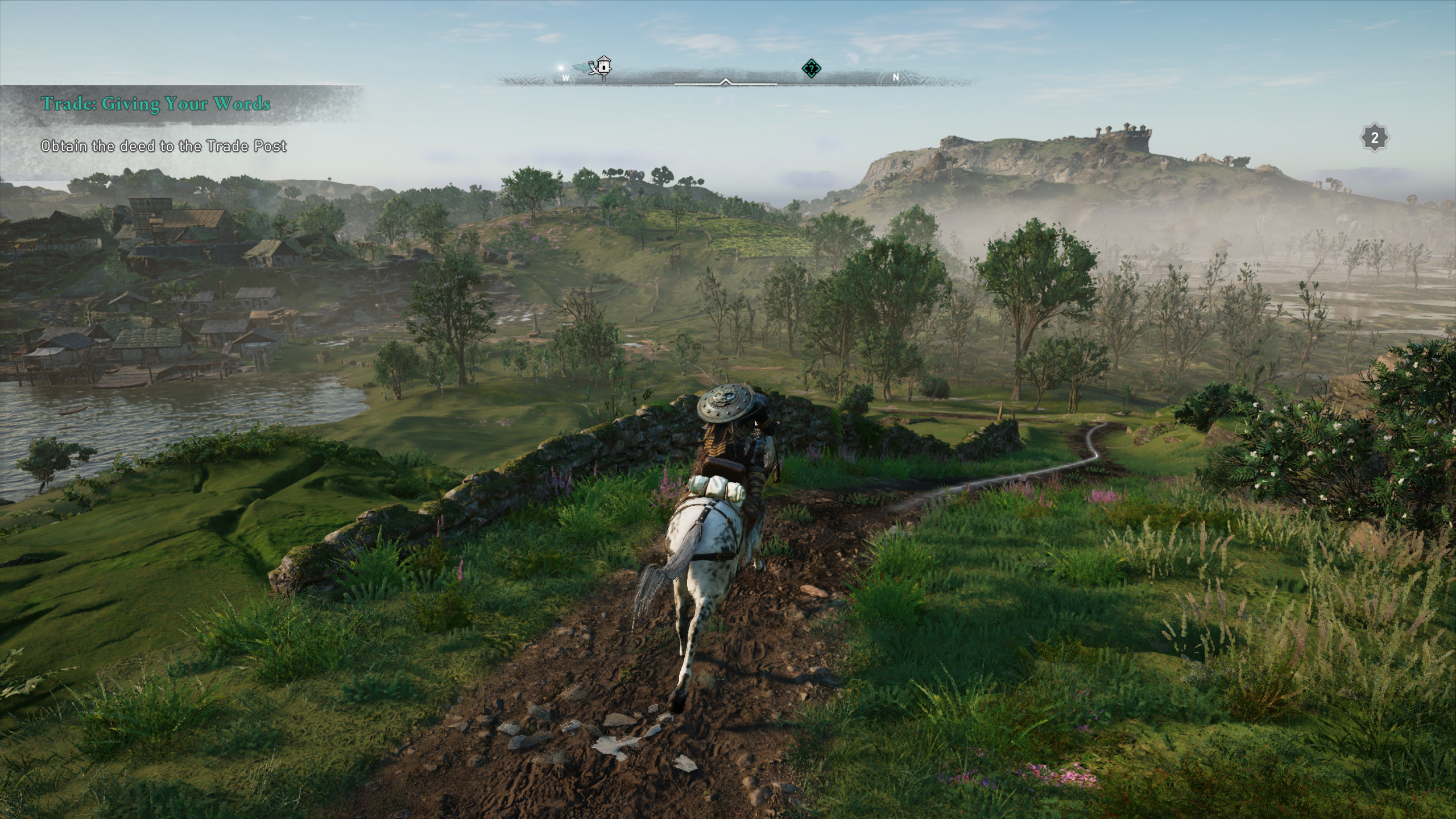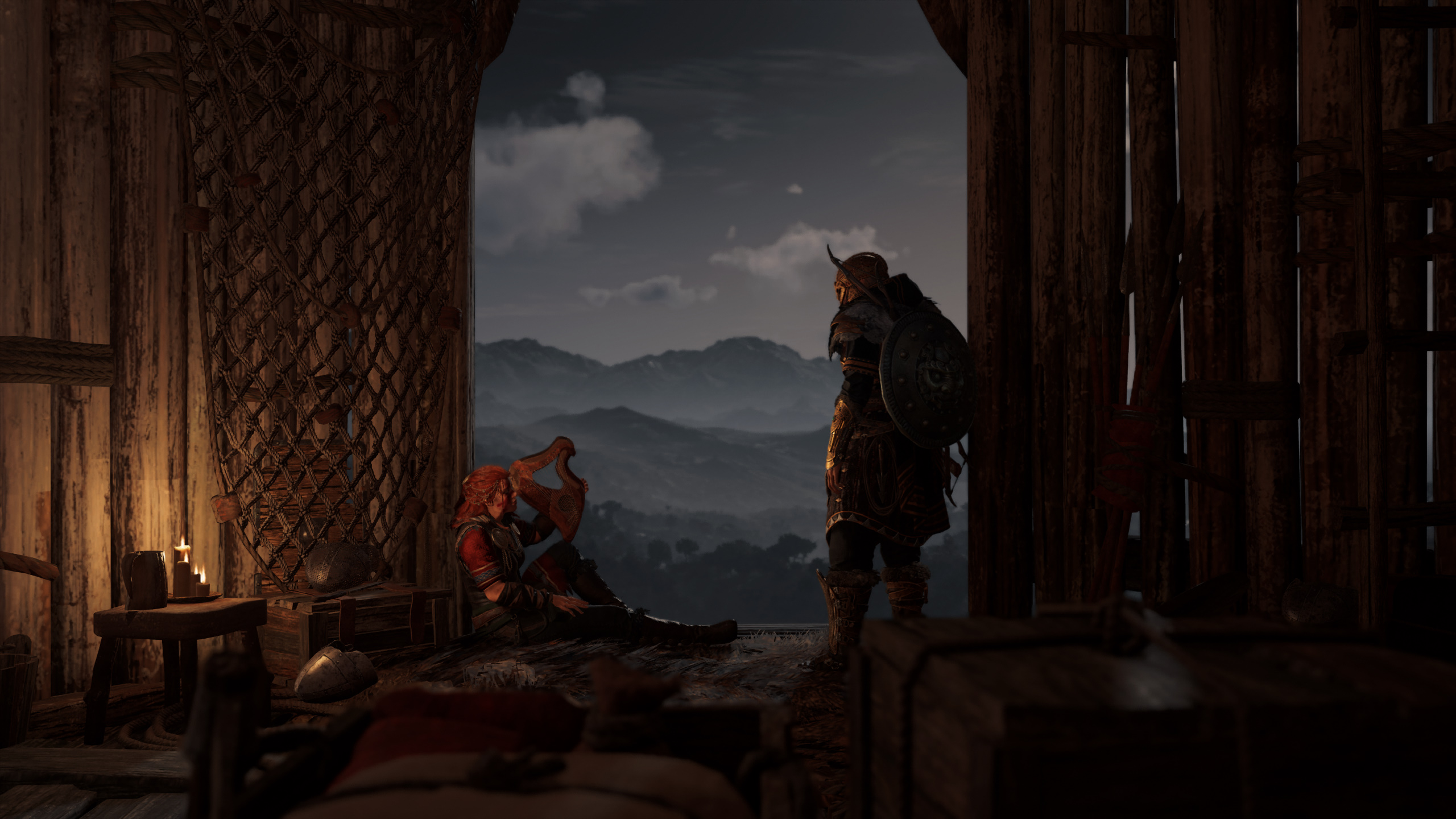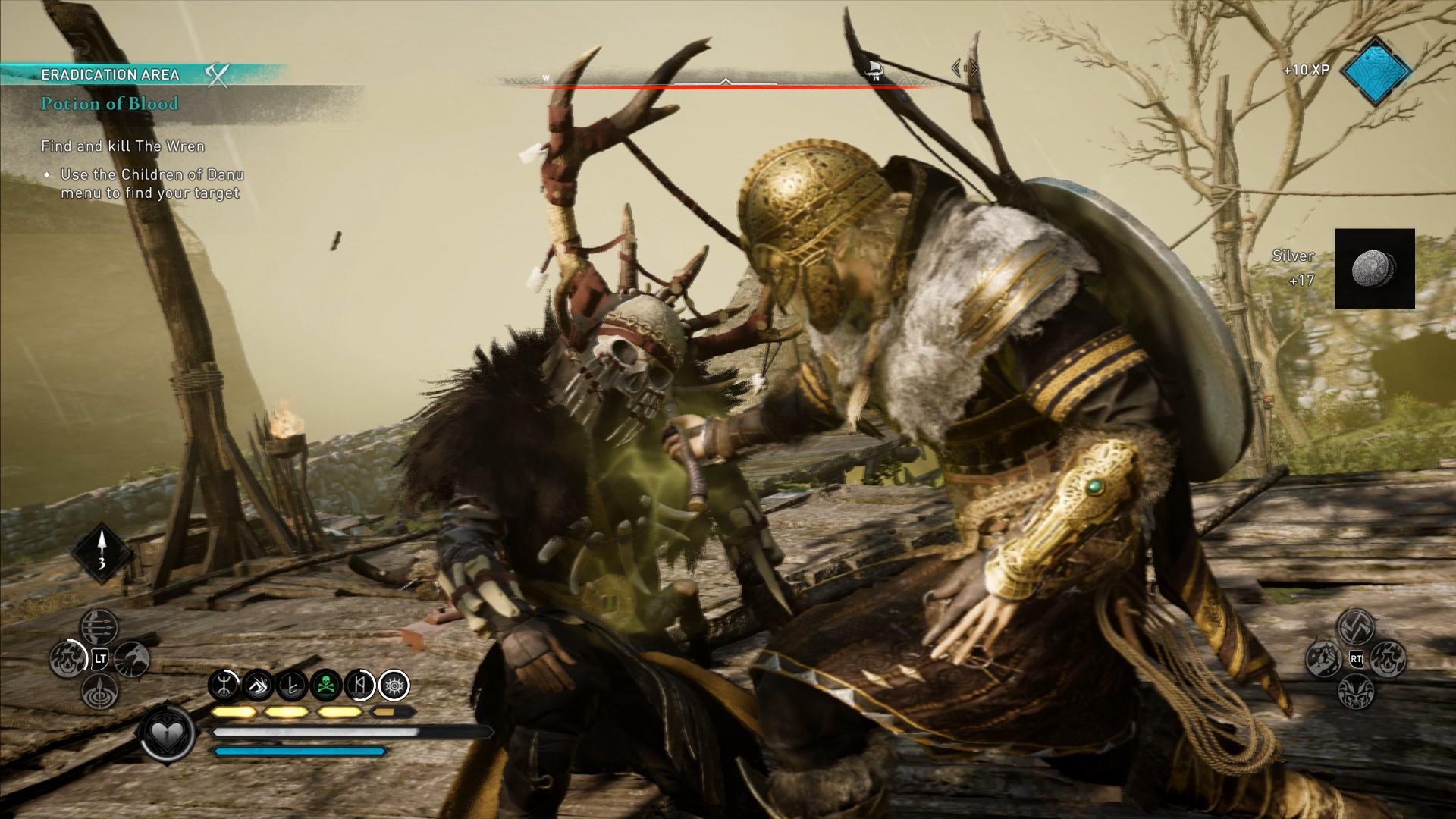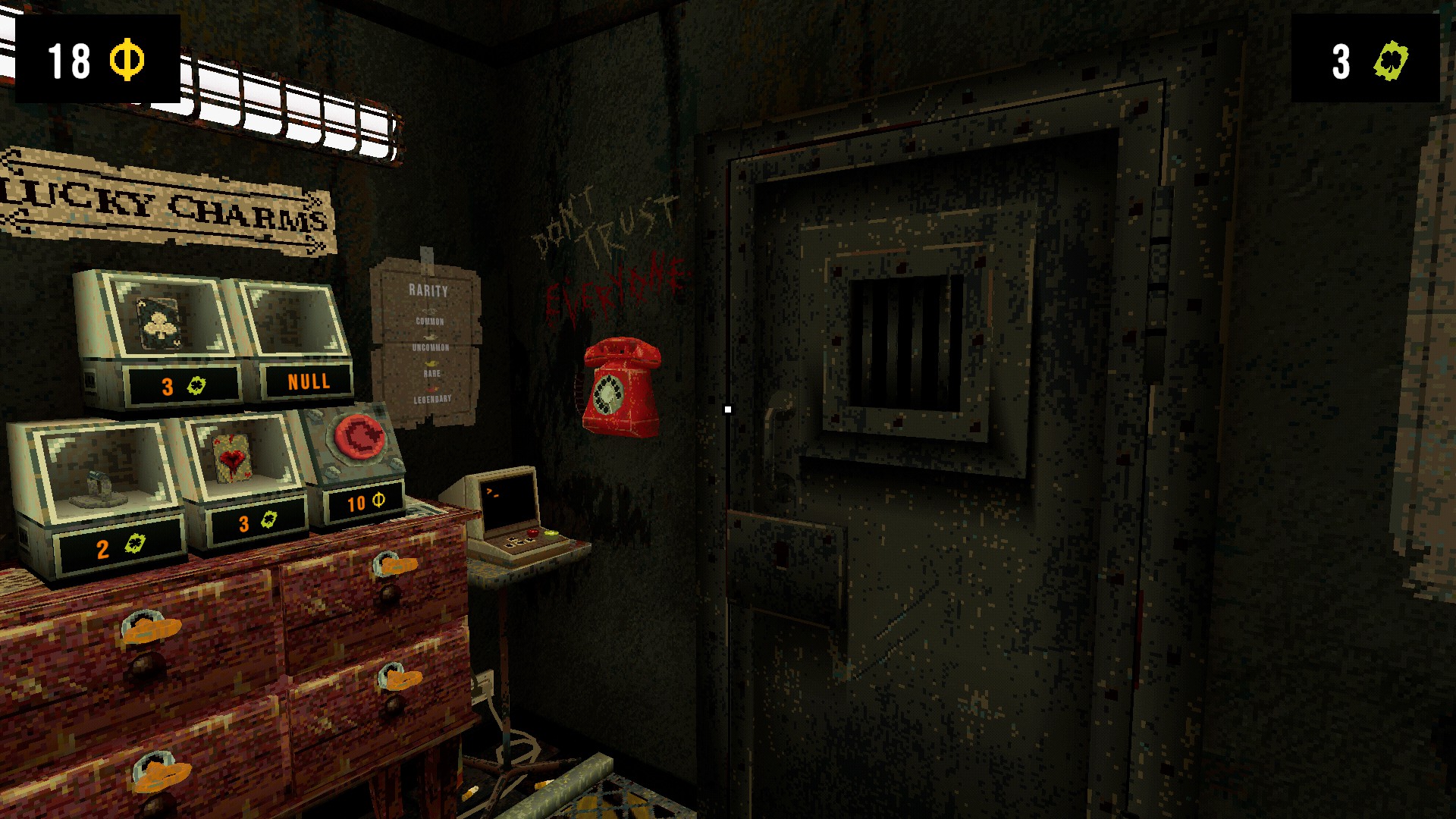Assassin's Creed Valhalla: Wrath of the Druids is a massive expansion stuffed with pagans, intrigue, and Irish mythology
Valhalla's first big DLC was worth the wait.
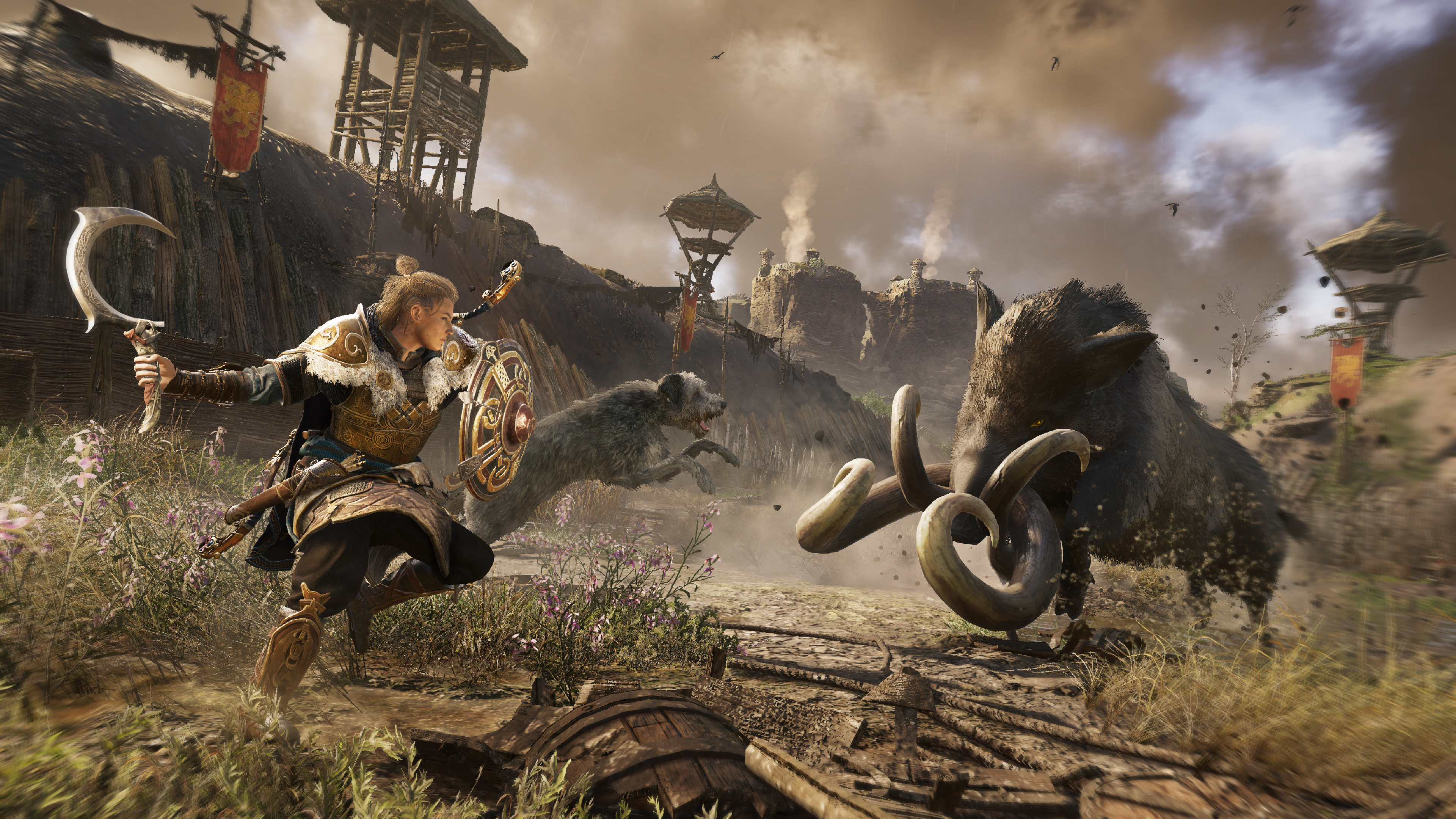
On the sacred sizing chart of videogame DLC, Assassin's Creed Valhalla: Wrath of the Druids sits just a few notches shy of Big Chungus. It's an impressively large expansion—which maybe isn't all that surprising considering Valhalla itself is a titanic RPG—that expands on nearly every aspect of the core game. You want a big, new story? It's up to you to reunite all of Ireland. You want more regions to explore? Wrath of the Druids has four of them, and they're each stunning. You want new enemies? Armor and weapons? Mythological creatures? Skills? Abilities? Cultists to hunt? Wrath of the Druids has all of that too. Aside from some frustrations (most of which are the same complaints I had with Valhalla's main campaign), Wrath of the Druids is a no-brainer for anyone who wants a little more Eivor in their life.
What's great is that even if you're still chewing through Valhalla's 60-hour main story, you can make the trip over 9th century Ireland whenever you want. Wrath of the Druids is available after completing one of the two initial quest arcs introduced after arriving in England and has a base power level of 55 (that scales upward so even veteran players will still be challenged). So it's basically available once players have completed Valhalla's hours-long prologue.
Valhalla's main story is great, so I wouldn't urge anyone to drop that in favor of exploring Ireland straight away. But Ireland is absolutely a destination worth seeing. It's subtle, but Ubisoft has done a brilliant job recreating Ireland's velvety green dales and craggy mountains, and I'm having a fun time scouring pagan ruins and ramshackle villages built around enormous wicker men effigies. If you liked the Glowecestrescire story arc in Valhalla, which explores England's pagan past, Wrath of the Druids is basically a lot more of that.
Old gods and new
The more I trade, the more Dublin grows, expanding and changing just like my village did during the main campaign.
The story starts with Eivor discovering that her cousin is now the Viking king of Dublin and is desperate to earn the favor of the new High King of Ireland in order to cement his legacy. It plays out like a standard quest arc from the base game—a self-contained story with its own twists and turns that sees High King Flann Sinna trying to reunite all of Ireland under his name.
What gives the story a lot of heft is how it explores the changing tides of Ireland's culture during this pivotal time in its history. Christians have mostly stamped out and erased Ireland's pagan heritage, but Flann is trying to find a balance between the old world and the new. As the title implies, a cult of druids sees Flann and his fellow Christians as oppressors and is plotting to assassinate him and sow enough chaos to shatter Ireland's fragile Christian rule.
It's an exciting backdrop to roleplay a Viking like Eivor. Her kingly cousin, Barid, isn't much of a Viking, for example. Instead of ruling Dublin with an iron fist, he's gentle, forgiving, and much too interested in expanding his influence through trade and diplomacy rather than war. That attitude doesn't mesh well with Flann's thirst to rule all of Ireland at any cost. Though I haven't fully completed the story, I can already predict what tough decisions possibly lay ahead. And like any good RPG, I'm starting to dread having to choose sides.
The story whisked me off to the far corners of the four new regions available in Ireland, but I was repeatedly traveling back to Dublin. One of the biggest new features in this expansion is its trade missions, which lightly repurpose the building and village management system from Valhalla's story campaign. One of a dozen new characters is Azar, a gender-fluid Persian trader who is helping Barid turn Dublin into a global merchant power.
Keep up to date with the most important stories and the best deals, as picked by the PC Gamer team.
Scattered across Ireland are new trading posts that can be captured and upgraded using trading supplies pillaged from monasteries. Each one produces a unique resource that is automatically transported to Dublin while I'm off doing other things. Those goods can be collected and used to complete various trading assignments with far-off nations, unlocking new armors, cosmetics, and a bunch of other nice-to-have goods. The more I trade, the more Dublin grows, expanding and changing just like my village did during the main campaign.
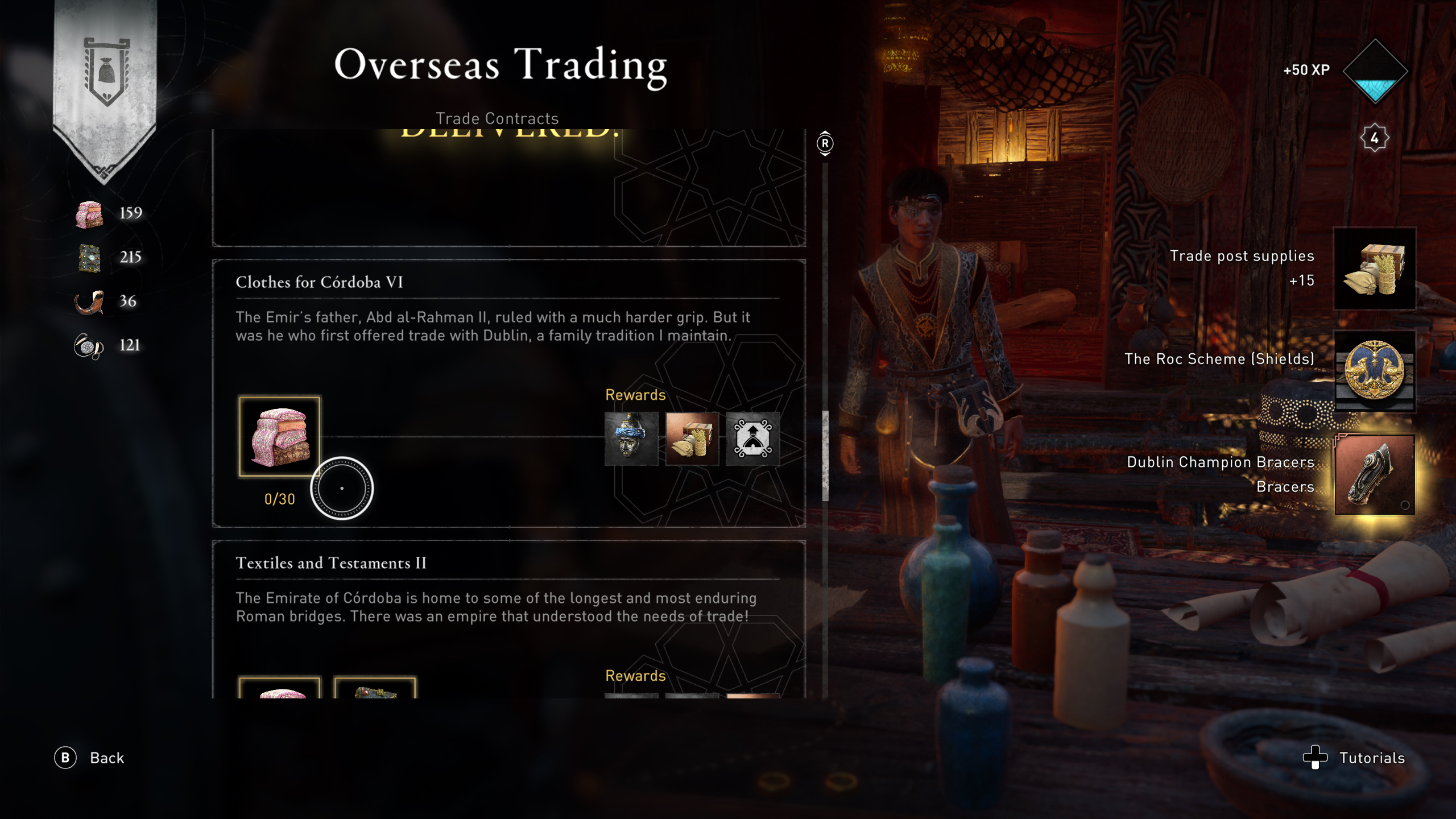
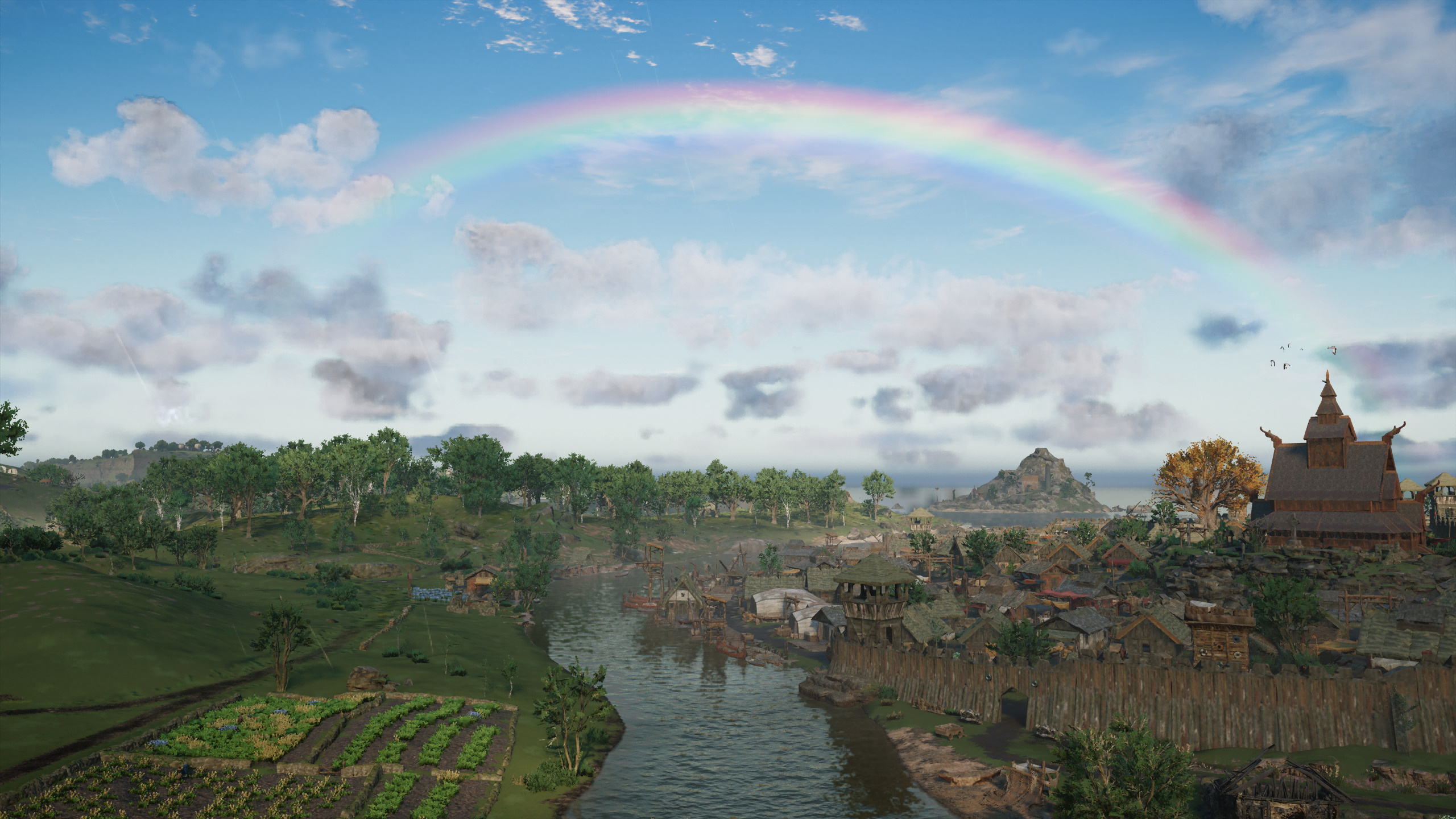
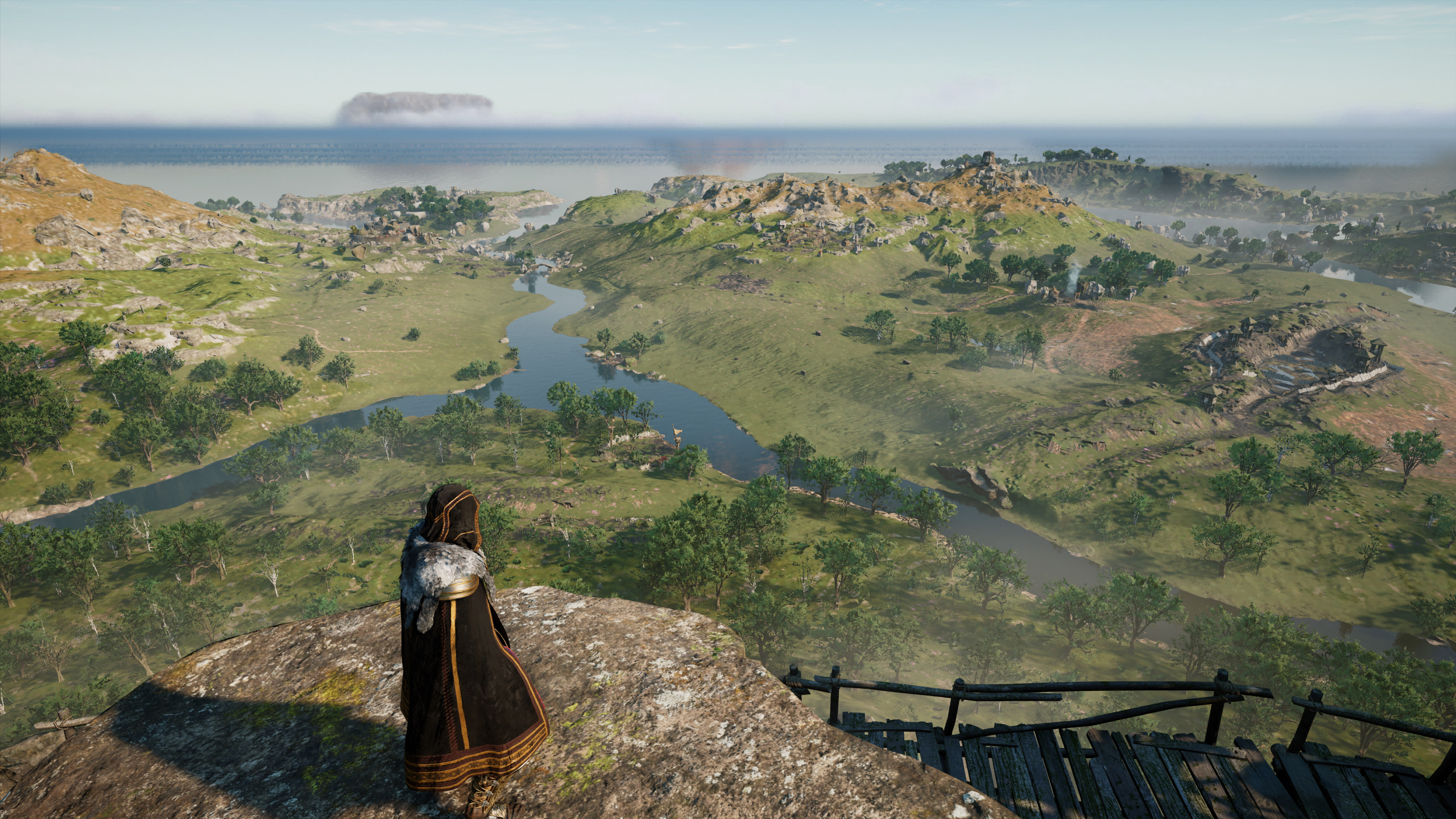
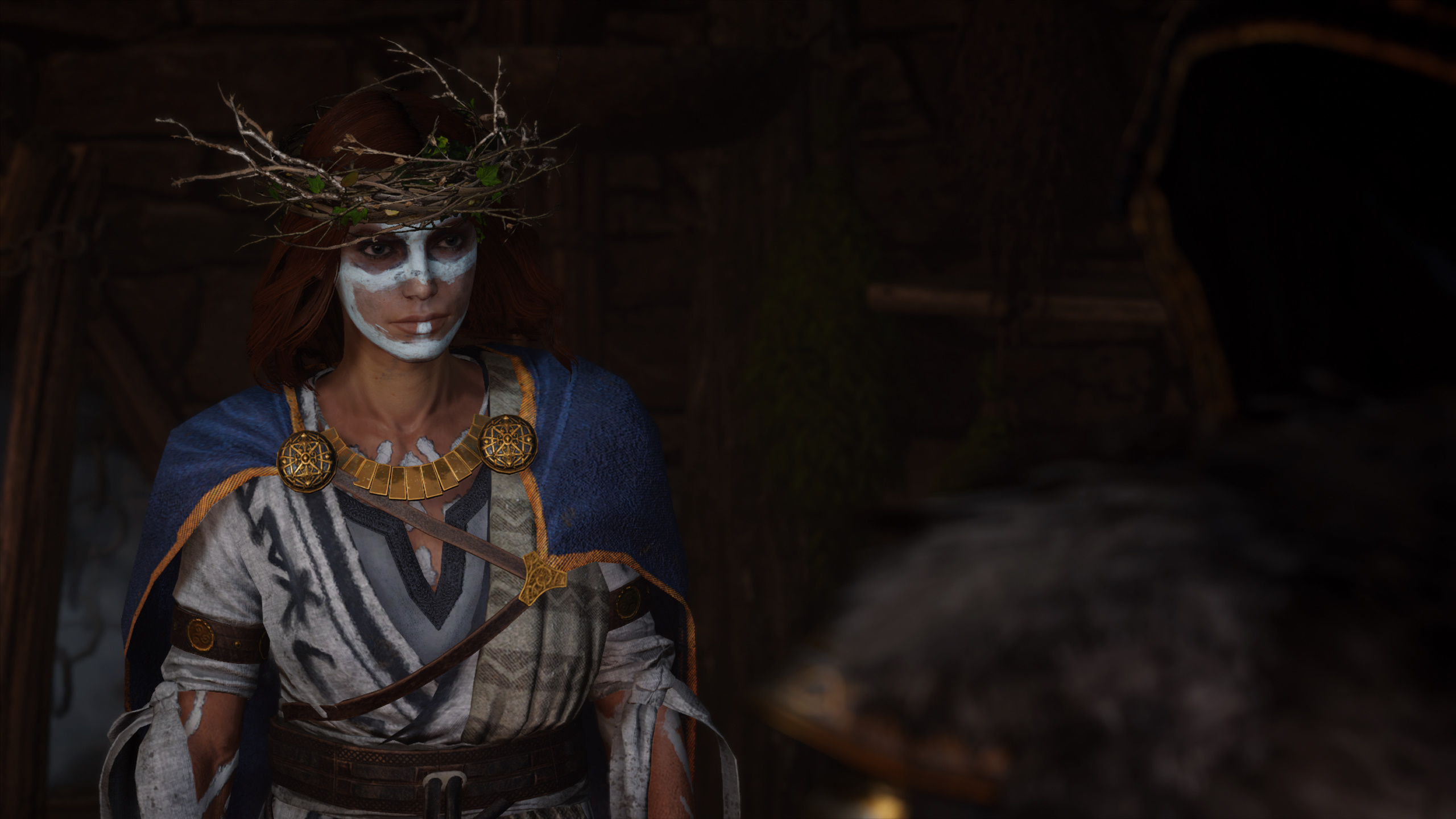
I like that Assassin's Creed Valhalla emphasizes the action over its RPGness, but damn I wish it wasn't so afraid of nitty-gritty number-crunching.
It's a relatively lightweight system that slides into Valhalla's usual loop of exploration and combat with ease, but I do wish it had more depth to it. Instead of bartering or manipulating some kind of simulated economy, the system is largely just finding the trading posts, spending the necessary resources to upgrade them, and then handing their products over to Azar in exchange for rewards. I like that Assassin's Creed Valhalla emphasizes the action over its RPGness, but damn I wish it wasn't so afraid of nitty-gritty number-crunching. Make me do math, you cowards!
It's a missed opportunity, but one that's easy to forgive considering Wrath of the Druids has so much else going on. There's a ton of new environmental puzzles to solve and loot to find, and some tough optional bosses like some more Lost Drengr and even some mythological animals to fight. Similar to both Valhalla and Odyssey, there's also whole new gang of cultists to track, identify, and assassinate. They're called the Children of Danu, and they're basically a druidic death cult hellbent on ridding Ireland of Christian influence and restoring its pagan traditions. So far there's not much nuance to them, though. They're murderous, vicious, and very clearly evil—a big difference from some of the other druids I've met in the story who are more keen on finding a peaceful way to preserve their traditions.
This new batch of cultists are functionally no different from those that appeared in Valhalla, but that's not a bad thing. It's still just as fun finding vague clues hinting at their location, scouring the map to pinpoint where they are, and then using my faculties to plot their assassination. It's a template that just doesn't get old for me.
Most of these cultists will go down without a fight since they're hidden in plain sight and will never see me coming, while others are holed up tight and surrounded by druid warriors. There are several new enemy types to battle against, and I really enjoy how different they are from England's rank-and-file soldiers.
Druid, where's my cairn?
The caves and pagan ritual sites these druids occupy are often submerged in a toxic fog that causes Eivor to hallucinate if she gets too close. Most of the seven new enemy types all gain enhanced powers while in the fog, like Venomous Druids being able to magically teleport around the battlefield, while Fire Druids burst into flames that hurt you if you get too close. This sudden injection of fantasy is all explained away as Eivor tripping balls due to the fog. But it's such a silly way for Ubisoft to still cling to some semblance of historical realism that I can't help but respect it.
These new enemy types are fun to battle and surprisingly competent fighters. Instead of taking me head-on, they use guerilla warfare tactics to whittle my defenses down bit by bit. Head Hunters will strafe me from behind, using their scythes to sweep my legs out from under me. Others will nick me with poison daggers or climb up high and pelt me with firebombs. I just wish I had more strategic options for fighting the fog. As far as I could tell, it is basically a permanent fixture of a specific battlefield. There's a way to make Eivor immune to the fog entirely if you complete some exploration objectives, but I wish it was more of a dynamic feature that I could influence by killing certain enemies or avoiding certain attacks.
Wrath of the Druids doesn't reinvent or improve Valhalla in any significant way, instead expanding what was already there, good and bad.
I gotta be honest, though: It feels like I'm nitpicking here. My only other complaints with Wrath of the Druids are the same complaints I've had since Valhalla was first released. Pillaging monasteries, for example, still feels like a pointless minigame due to how it tries to gingerly sidestep the horrific reality of an actual Viking raid. It also continues to make zero sense in the wider story. During one major quest, Barid's tenuous alliance with High King Flann was jeopardized because a group of troublesome Danes under Barid's control sacked a monastery and stole a priceless relic. Yet no one had anything to say about the monastery I burnt to the ground 15 minutes before starting that quest. It's a weird double standard that yanks me out of Valhalla's otherwise great storytelling every single time.
That complaint basically exemplifies Wrath of the Druids as an expansion: It doesn't reinvent or improve Valhalla in any significant way, instead expanding what was already there, good and bad. Everything I loved about Valhalla—the political intrigue, stunning scenery, and absorbing list of side activities—is all present with Irish twists. And everything I didn't like about Valhalla is there, too. Just like in Valhalla, those little irritants have been pretty easy to ignore. I'm still working through it, but Ubisoft suggests that the whole thing will take around 20 hours to complete. That estimate seems conservative to me. Wrath of the Druids is a big, meaty expansion and a must for anyone who enjoyed Valhalla.
With over 7 years of experience with in-depth feature reporting, Steven's mission is to chronicle the fascinating ways that games intersect our lives. Whether it's colossal in-game wars in an MMO, or long-haul truckers who turn to games to protect them from the loneliness of the open road, Steven tries to unearth PC gaming's greatest untold stories. His love of PC gaming started extremely early. Without money to spend, he spent an entire day watching the progress bar on a 25mb download of the Heroes of Might and Magic 2 demo that he then played for at least a hundred hours. It was a good demo.
